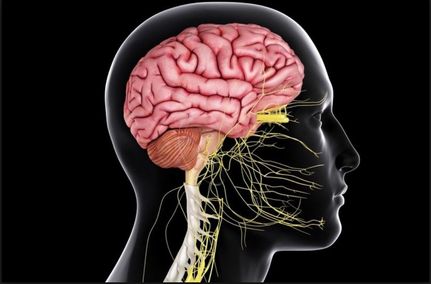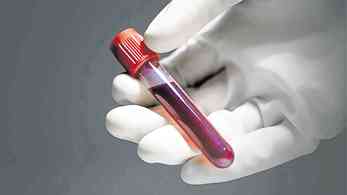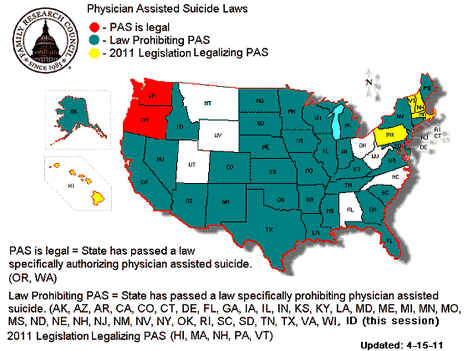 Image of the Central Nervous System. https://www.thoughtco.com/central-nervous-system-373578 Image of the Central Nervous System. https://www.thoughtco.com/central-nervous-system-373578 By Emily Rehmet, '20 For years, the American Psychological Association has classified eating disorders into a discrete category on its own, a direct byproduct of patients having doubts about their body size and image. However, a recent study suggests that bulimia nervosa may be connected to something deeper… a vehicle for people to escape from self-critical thoughts. New research has shown that rather than simply having an obsession with food, women with this disorder have decreased blood flow to a brain area associated with self reflection and self worth. What is this newly discovered brain area that could be causing this you may ask? A region called the precuneus [1].
1 Comment
By Jess Sevetson  Definitive diagnosis for many neurodegenerative diseases – such as Alzheimer’s, Parkinson’s, or Chronic Traumatic Encephalopathy (CTE) – frequently comes far too late. With dementia patients, doctors assess memory and behavior using specialized cognitive tests, though the results of these tests can be ambiguous. The “true gold standard” for diagnosis of both Alzheimer’s and CTE is through direct postmortem examination of brain tissue. Now, both researchers and athletes are working to change that.  http://www.punchbowl.com/gridfs/fs/4e8dc29e1a349e2dd8000165-1317913248 http://www.punchbowl.com/gridfs/fs/4e8dc29e1a349e2dd8000165-1317913248 by Denise Croote '16 Do you remember your mother’s facial expression when you brought home another birthday party invitation in 3rd grade? Through those clenched teeth, she was secretly dreading the sugar-induced hyperactivity that she was going to have to deal with after Jimmy’s mom shipped you back. Calculating the grams of sugar in the cake, Kool-Aid, and goodie bags, her apprehension was almost palpable. Everyone “knows” that sugar induces hyperactivity in children, but the research does not support this belief. An article published in the British Medical Journal in 2008 reported that twelve double-blinded, randomized control trials failed to see a difference in the behavior of children placed on sugar versus non-sugar diets. Like at a birthday party, the researchers fed children sugar from sweets and chocolates. Interestingly, none of the studies reported a difference in behavior even in the children who were considered “sensitive” to sugar, including those with attention-deficit hyperactivity disorder.
by Nari Lee '17
by Georgia Bancheri '15 Ladies and gents, have you ever wondered what drinking does to the brain, besides make you look like one class act of a gent (picture provided for those who’d like to emulate such)? I mean, I’m sure that’s what you’re all talking about come Saturday night when you’ve got a sex on the beach in your hand and you’re mmms mmmsing on the dance floor. (Gents, I know that’s your preferred drink. Don’t be ashamed.) Well, copious drinking can cause a neurological disease called Korsakoff’s Syndrome. I’m talking ‘bout more than your average beer-bellied frat boy drinking. (Frat boys, if you’re reading, don’t fret too much…) Anyhoo, the main symptom of Korsakoff’s is confabulation--in lay-man’s terms, flat-out lying--but, get this, the person whole-heartedly believes their lies.
by Matthew Lee '15  A map showing which US states have legalized/prohibited physician-assisted suicide. [image via] Imagine Emma Sue Schroeder, an 83-year-old terminal cancer patient who wants her doctor to prescribe lethal pills for her. Should that be legal? On April 2, Prof. Felicia Ackerman (PHIL) discussed the above scenario in a Science Café hosted by The Triple Helix called “The Double Standard in Physician-Assisted Suicide.” Ackerman is well-known as the writer of well over a hundred letters to the editor in The New York Times and as the writer of a column in The Providence Journal. Ackerman teaches PHIL0030 “Skepticism and Knowledge” and PHIL0880 “Ethical Themes in the Contemporary American Short Story.”
Ackerman argued that, out of respect for Rachel’s autonomy, it should be legal for lethal pills to be prescribed to Rachel and contended that government should not deal in morality. by Sadhana Bala '17  Human embryonic stem cells. [image via] In the United States, the biomedical significance of human embryonic stem cells (hESC) is recognized by Democrats and Republicans alike. Every passing month brings reports of the newest successful application of embryonic stem cells to a specific medical cause. hESC therapy has been used to further research on a wide variety of ailments – including spinal cord injury, multiple sclerosis, infertility and even hearing loss (1) – and it has generated largely promising results.
The controversy with hESC research does not center on the results but the methods – a moral dilemma that has been greatly debated in the media for years. Embryonic stem cells are derived from four- to five-day-old blastocysts, hollow balls of cells that represent the beginning stage of human embryo development. The extraction procedure often results in the destruction of a human embryo, usually one that has been voluntarily donated in a fertility clinic. But the huge potential of these cells has caused scientists, politicians, and the general public (2) to come to terms with this fact. Over the last two to three years, embryonic stem cells have, more or less, crawled off the agenda of the general media. Government-sponsored research for embryonic stem cells is currently at a pinnacle, yet it remains hindered due to one small piece of decade-old legislation as a pain reliever. [image via] by Sophia Park '13.5 Pain is perhaps our most important sense for survival – it warns us with a piercing signal that our body has sustained damage. However, it is unpleasant by nature. The search to relieve pain dates back to at least 3400 BC, when ancient Sumerians used opium (1). In modern times, with advances in science and technology, we have a much more diverse and refined list of chemical agents for various medical purposes. The advent of inhalant anesthesia contributed immensely to the development of modern general anesthesia. Currently, the most commonly used inhalational anesthetic agents are isoflurane, desflurane, sevoflurane, and nitrous oxide. When the idea of inhalational anesthesia first began to emerge, scientists focused on nitrous oxide and ether gas, largely due to their familiarity to people. Both gases were well known for their hypnotic effect. Nitrous oxide is also known as “laughing gas,” and was used recreationally to induce euphoria often accompanied by giggling, primarily at parties and in traveling shows (2, 3). by Hallee Foster '15 Former-49ers Quarterback, Alex Smith, bears a brutal sack to the head. [image via] Three-letter acronyms abound in our society – NRA, NBA, CDC – and often name agencies that seldom interact. However, an unlikely friendship has recently formed between two three-letter permutations that seem to occupy opposite sides of the spectrum: NFL and NIH. In 2012, the NFL – yes, the National Football League – donated a whopping $30 million to the Foundation for the National Institutes of Health to fund research on traumatic brain injury – a subject that hits close to home for the NFL and its players.
Traumatic brain injury (TBI) is a serious public health problem with an ever-widening scope of severity. It is currently the number one cause of death amongst young adults [1] and is a particular menace to young athletes. Perhaps even more frightening than its prevalence is its nebulosity. We have no rapid, reliable diagnostic methods for concussions and know little about the long-term consequences of repetitive insult to the head other than the high risk of developing progressive brain degeneration, chronic traumatic encephalography (CTE). Brains afflicted by CTE show demonstrable physical damage, including excess protein build up and tangled cells. CTE produces symptoms analogous to those of Alzheimer’s – irritability, confusion, depression, mood swings, memory loss, and cognitive difficulties. Preliminary tests have revealed that several former high-profile athletes, including Hall of Fame running back, Tony Dorsett, may be living with CTE. Fifty-four former-NFL players have donated their brains for scientific analysis post-mortem to the Center for the Study of Traumatic Encephalopathy at Boston University. Fifty-two of said brains show marked signs of brain damage from repeated concussions [2]. |



